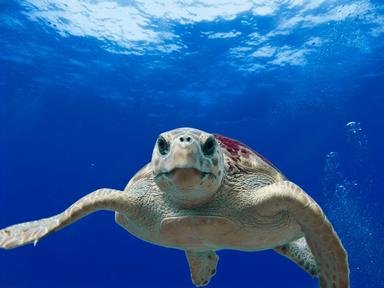Quiz Answer Key and Fun Facts
1. The leatherback sea turtle can be found in waters nearly everywhere around the world, but where would you NOT find one?
2. The leatherback sea turtle is the only surviving member of a group which has existed for many millions of years. In fact, it has its origins right back in which Mesozoic period?
Hint: the tyrannosaurus could also be found at this time.
3. The leatherback sea turtle is very large, but is it the largest of the living turtle species in the world?
4. The leatherback sea turtle is certainly a record-breaking creature! Which of these records does it NOT hold?
5. The leatherback sea turtle has made many adaptations in order to survive colder waters. Which of these is NOT an example of one of these adaptations?
6. Which of these best describes the eating habits of the leatherback sea turtle?
7. Which of the following body parts does the leatherback sea turtle lack?
8. Leatherback sea turtles mate for life.
9. This poses a major threat to the leatherback sea turtle when ingested, and unfortunately one third of leatherback sea turtle adults have attempted to. What am I talking of?
10. Which of these does NOT pose a MAJOR THREAT to the existence of ADULT leatherback sea turtles?
Source: Author
Daaanieeel
This quiz was reviewed by FunTrivia editor
Tizzabelle before going online.
Any errors found in FunTrivia content are routinely corrected through our feedback system.

